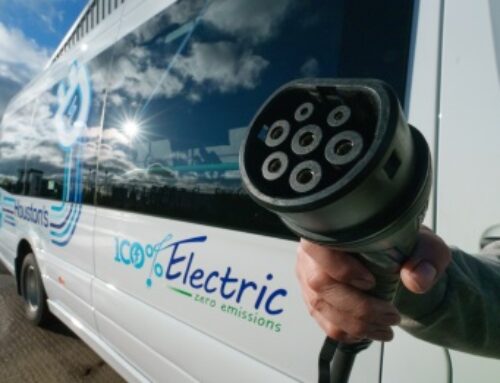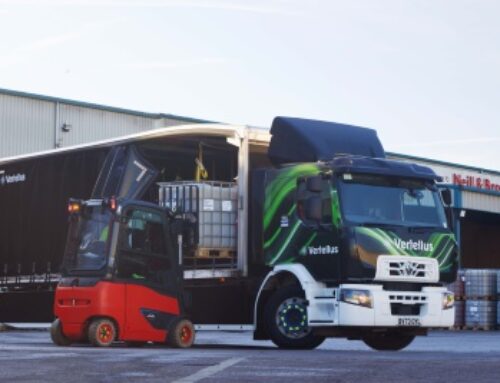Varta offers battery maintenance advice
 Commercial vehicle battery provider Varta has provided guidance on battery maintenance regimes for fleet operators dealing with altered operating conditions resulting from the Covid-19 outbreak.
Commercial vehicle battery provider Varta has provided guidance on battery maintenance regimes for fleet operators dealing with altered operating conditions resulting from the Covid-19 outbreak.
During the recent lockdown period, nearly all households have relied on direct-to-door deliveries, points out Varta, putting a strain on many operators, with extended service times being advised due to demand outstripping capacity.
“This has impacted many fleets, as additional vehicles have been put into action and additional routes are being used; but often at the cost of vehicles’ maintenance schedules being adhered to,” said Vince Ward, senior technical sales representative and UK CV specialist for Varta.
“In addition, some fleet maintenance staff have been either furloughed or working limited schedules to avoid too many being in the workshop all at once, to adhere to the social distancing guidelines that the government put in place.
“What this means is, many delivery vehicles have not have had the care and maintenance they would usually do, and jobs like carrying out regular battery maintenance and testing have been skipped.”
Varta recommends that as businesses return to work and get back on track, battery maintenance should be routinely carried out on their fleets, particularly on those that might not have been serviced for some time. To ensure the best performance from batteries, the firm suggests the following procedures.
Visual inspections / voltage checks
“Test the batteries and check voltage at least every four weeks,” advised Vince.
“Keep a record of battery maintenance history to ensure maintenance intervals are not missed.
“Check batteries individually, and recharge immediately if the voltage is at or below 12.4 V.
“Both batteries should be at the same voltage. If not, balance the charge with a smart charger.
“The charger should have a capacity of at least 10 per cent of each battery’s capacity e.g. a 200Ah battery requires at least a 20A charger.”
If a battery tester recommends exchanging one of the two batteries fitted, both should be replaced as a set, Vince adds.
“To ensure the longest potential life time of batteries in pairs, it is recommended to fit only batteries from the same production batch and submit them to frequent checks.
“A degree of ‘unbalancing’ of a pair of batteries is inevitable during normal usage. This minor degree of unbalancing can cause gradual deep discharging. Batteries which are fitted as a pair are typically unlikely to fail at the same time in reality. Nevertheless, batteries should always be exchanged in a set.”
Correct testing
If testing a battery in-vehicle, it’s important to make sure all vehicle loads (lights, etc) are switched off and the key is removed, says Vince.
“Always visually check the battery case and do not test a battery if any signs of damage or incorrect polarity,” he continued.
“A battery tester with a printer, leads in good condition (no repairs) and capable of testing conventional SLI, EFB and AGM is recommended.
“Connect the tester clamps to the battery: red to positive (+), black to negative (–).
“Rock each clamp back and forth to ensure a good connection.
“Follow the steps the tester proposes: add the Ah/CCA ratings displayed on the batteries and make sure that you always test Varta batteries against EN norm.
“Follow the recommendations made by the tester in order to ensure that batteries are being maintained appropriately.”
A full vehicle system check should always be run alongside battery checks, Vince says.
“Check for consumers draining the battery with the key off,” he added.
He also advises that technicians should know how to test for parasitic drain on an electrical system, excessive cranking amps and alternator output, as well as understanding volt drop on electrical circuits.
“Only three cranking attempts should be carried out. The cranking attempts should follow a pattern of three seconds of cranking and a minimum of two seconds’ pause.
“Extremely high currents can be drawn by faulty components such as starter motors, which can cause internal issues not visible to the naked eye.
“Excessive and repeated cranking attempts should be avoided.”
He advised: “Never jump start batteries if electrical components on the vehicle are known or believed to be faulty.”
Sufficient degassing/ventilation
“Always ensure that batteries are fitted in a way that ensures sufficient ventilation,” said Vince.
“If batteries are fitted in sealed battery compartments fit a degassing pipe to the batteries vent hole to ensure that gases can be released from the compartment in a controlled way.”
To help operators find the right battery for their vehicle, Varta offers its free-to-access, online Varta Truck Portal:













